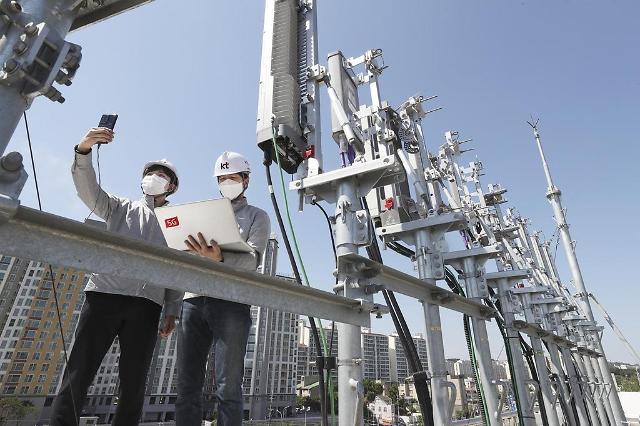
[Courtesy of KT]
In 2019, South Korea commercialized 5G mobile networks based on non-standalone (NSA) standards, using 4G infrastructure before switching to 5G standalone (SA). KT and other companies have developed various technologies and equipment along with functional tests for the commercialization of 5G standalone services this year.
In an industrial complex in the northern city of Paju, KT established a 5G standalone network to secure the quality of SA services that can be provided to actual consumers. "We expect 5G SA to be an important opportunity for South Korea's industrial innovation in terms of true 5G networks," said KT's network division head Lee Cheol-gyu.
KT said it has secured upgraded quality to provide 5G standalone data communication without interruption in a mobile environment while laying the foundation for providing network slicing, which is essential for separating virtual networks and providing traffic quality. The company vowed to actively discover business-to-business (B2B) models by linking them with various industries in Paju.
To provide 5G standalone services to actual customers, voice calls and data communication functions must be stable. In the early days of 5G standalone services, voice calls will be provided using evolved packet system (EPS) fallback technology, an evolved packet system that provides voice services based on smooth signal processing between 5G and LTE.
LG Uplus (LGU+) has demonstrated core technology related to high-quality voice services in a 5G commercial network by introducing voice over 5G (Vo5G) that allows users to make calls while using 5G data services at the same time.
5G standalone requires voice calls based on EPS fallback or Vo5G. EPS fallback is recommended for the early deployment of 5G standalone services. Vo5G will help telecom service providers to provide customers with substantially improved voice capabilities with extra features like ultra-high-definition voice communications.
SK Telecom (SKT) has completed preparations through successful data communication in a 5G commercial network. The company has applied technologies such as international standard-style network slicing and mobile edge computing (MEC).
5G MEC, which provides ultra-low delay and high-speed services regardless of physical distance, is designed to be implemented at cellular base stations or other edge nodes and enables flexible and rapid deployment of new applications and services for clients. By running applications and performing related processing tasks closer to the cellular customer, network congestion can be reduced and applications perform better.
There have been technological advances achieved by South Korean companies. On January 15, KT successfully verified the on-site transmission of data from a self-driving vehicle and a base station using the frequency of 28GHz bandwidth. The 28GHz-based 5G network will make data transmission speed faster especially in areas where traffic is concentrated, such as stadiums and large shopping malls. Essential network services for self-driving cars will be safer.
In October 2019, KT announced the development of an open 5G beamforming base station in the 28GHz band through cooperation with Movandi, a U.S. 5G startup. Beam-forming focuses power to desired users to form beams, expand coverage and increase speed in the 28GHz band. KT's beam-forming technology is possible among equipment from different manufacturers.
Copyright ⓒ Aju Press All rights reserved.



